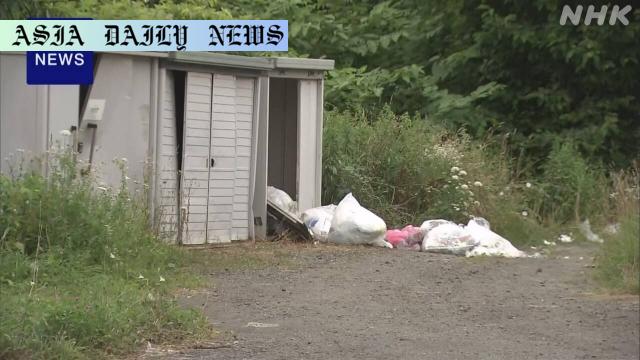Brown Bear Attack leads to ongoing safety concerns, urging residents to adjust waste disposal and ensure safety as a priority.

Introduction: The Tragic Brown Bear Encounter in Hokkaido
In the quaint town of Fukushima in Hokkaido, northern Japan, a heart-wrenching incident has left the community grappling with a heightened sense of alarm. Just days ago, a brown bear attack tragically claimed the life of a newspaper delivery man. This grim event is part of an unsettling pattern where wildlife, particularly brown bears, appears to venture further into human habitats, driven by hunger and the irresistible lure of improperly managed waste. Residents now navigate their daily routines with caution, as authorities work tirelessly to mitigate risks and protect lives.
The Role of Food Waste in Attracting Wildlife
One pressing concern highlighted by the incident is the improper disposal of waste, which has inadvertently drawn wildlife closer to human settlements. A garbage storage shed near a supermarket became a hotspot for brown bear activity just hours after the attack. Authorities observed that the bear had damaged the shed and pilfered pet food and other items. This incident underscores the vital need for effective waste management policies. Experts emphasize the role of food waste as a significant attraction for wildlife, urging residents to dispose of their garbage more responsibly to deter bear activity.
Community Struggles and Responses
The aftermath of this attack has profoundly impacted the Fukushima community. Local businesses, including the town’s sole supermarket, are adapting their operations to ensure employee and customer safety. Store manager Iwabuchi Yuki expressed his concerns, sharing how employees now require transportation to avoid walking to work amidst the ongoing threat. Town officials are advocating for stricter garbage disposal practices and are working to spread awareness about safety precautions. Residents, like one man interviewed, are now hyper-vigilant, checking surroundings before stepping out to dispose of trash—a practice that reflects the town’s new reality.
A Call for Holistic Solutions
While individual precautions are essential, the crisis calls for a more comprehensive approach to wildlife management. Authorities and environmentalists must collaborate to create sustainable solutions. Measures such as secure trash bins, designated bear-safe zones, and public awareness campaigns about wildlife behavior could mitigate risks. Additionally, studying bear migration patterns and habitat changes allows proactive intervention. With the right strategies, peaceful coexistence can be achieved between humans and wildlife, reducing the frequency of tragic encounters like the recent one in Hokkaido.
Conclusion: Lessons for a Safer Coexistence
The recent brown bear attack in Hokkaido is a sobering reminder of the delicate balance between humans and nature. Incidents like these not only underline the pressing need for public safety measures but also demand a broader reflection on human impact on wildlife habitats. The Fukushima town’s response to this crisis serves as a blueprint for communities facing similar challenges. By fostering greater awareness, cooperation, and responsible practices, we can build safer environments where both humans and wildlife can thrive harmoniously.
Commentary
The Importance of Proactive Wildlife Management
The recent brown bear attack in Hokkaido is a wake-up call for communities that coexist with wildlife. Such an incident highlights the urgent need for proactive measures that prioritize both human safety and wildlife conservation. Bears, like many other wild animals, are often driven by hunger and habitat loss to venture into human territories. Understanding this dynamic is key to addressing the root cause of such encounters rather than merely treating the symptoms.
Effective Waste Management: A Simple but Crucial Step
One of the most immediate and actionable lessons from this tragedy is the significance of waste management. Food waste is a major attractant for bears, and the lack of proper garbage storage solutions exacerbates the problem. Communities in bear-prone areas must adopt stricter waste disposal protocols. Installing secure, bear-proof trash bins and enforcing garbage collection schedules can significantly reduce human-bear conflicts. These relatively simple measures can have profound implications for the safety and well-being of both humans and animals.
Fostering a Culture of Coexistence
Ultimately, this incident serves as a reminder of our shared responsibility to coexist with nature. As urbanization encroaches upon wildlife habitats, the onus is on us to strike a balance. Educational campaigns that inform residents about wildlife behavior and safety practices are instrumental. Moreover, community-driven initiatives that include both citizens and experts can lead to long-term, sustainable solutions. Only through mutual respect and understanding can such tragic encounters be minimized, fostering a safer and more harmonious relationship between humans and wildlife.


